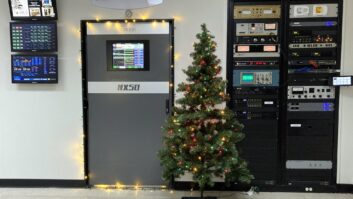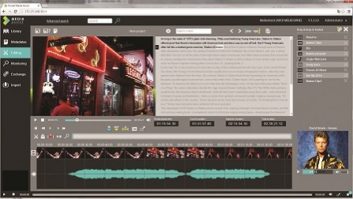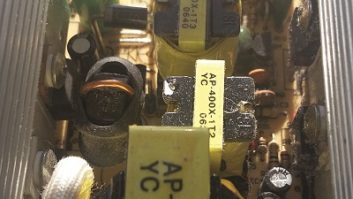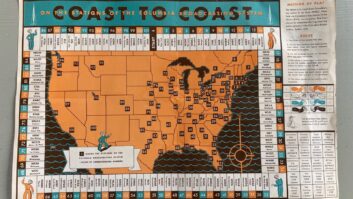David Ricquish felt lousy. He was out sick from his Christchurch, New Zealand grade school with a bad cold, lying in bed and bored silly.
For lack of anything better to do, he reached over to the radio and started tuning around. Within a few moments, he found himself listening to the world, and a lifelong fascination was born.
Soon Ricquish learned that many of his fellow New Zealanders shared this interest. Short- and medium-wave listening to European and American broadcasts was a popular pursuit. It had provided a lifeline to information and entertainment for the isolated English-speaking environment in Australia and New Zealand from the 1930s onward.
But Ricquish and a few friends took things a bit further than the average listener. They became DXers, studying catalogs of call signs and frequencies, and assiduously scanning the bands for new and distant stations, to better hear the sound of the world beyond their islands’ shores.
One day about 30 years ago, they came across a station at 1385 kHz that identified itself as WXLE. It generally came in loud and clear, with interesting U.S. programming, including Wolfman Jack and CBS News.
After a little research, they were amazed to learn that it was a mere 250-watter, transmitting from Canton Island in the South Pacific (the largest of the Phoenix Islands, now part of the nation of Kiribati), nearly 3,000 miles away.
They were further intrigued when they discovered that the call sign WXLE originally had been assigned to a U.S. military station in Eniwetok in the Marshall Islands, about 2,000 miles northwest of Canton Island, back in the mid-1940s.
The original WXLE had ceased operations shortly after World War II. A few years after Ricquish discovered the new WXLE on Canton Island, it too shut down, never to be heard again.
Ricquish and his friends had discovered that radio was not only attenuated by distance but also by time. Their investigations indicated that there had been hundreds of stations broadcasting in the Pacific region around the time of the war and thereafter, practically all of which had later gone dark.
Military occupations during the war, and later cold-war missile testing operations in the South Pacific, had temporarily placed thousands of U.S. and other servicemen and civilian contractors on these islands. Radio stations bringing them a piece of “home on the air” had been set up when the occupations began, and most had shut down once the visitors left.
As Ricquish puts it, “For a while, the jungle was full of the western world, and then it went quiet again.”
Fighting ephemera
Ricquish and his colleagues began to catalog these stations, and wrote articles for journals like the New Zealand DX Times about them. They learned about the U.S. military’s Jungle Network, the Mosquito Network and the Pacific Ocean network, and wrote of the Japanese occupation radio, with its propaganda broadcasts by Tokyo Rose and more.
Their research extended into post-war stations of the Far East Network and the Armed Forces Vietnam network, and they learned about U.S. stations in Beijing and even one in their home country of New Zealand. They began to compile a vast resource of information on these broadcast facilities, most of which operated between three months and three years.
Eventually Ricquish and his friends realized that their efforts also were being diminished by time. Their works were published in monthly journals but soon forgotten or tossed away, and thereby rendered largely inaccessible. The group’s attempt to preserve a lost resource was itself frustratingly temporary.
So Ricquish and a few others came up with the idea of the Radio Heritage Collection, a Web-based archive of their collected writing on Pacific Radio history, plus anyone else’s work in related fields they could obtain, and links to similar sites covering other areas.
The result is an astounding collection of broadcast history that continues to grow. This site is hosted by the New Zealand Radio League at its site radiodx.com.
The group’s vision of the site includes historical accounts in text, archival photos, aircheck recordings and links to Web sites of operating broadcast stations that have inherited historic allocations, call signs, facilities and other memorabilia, plus a comprehensive search engine to make the data accessible to historians and enthusiasts.
Ricquish feels that the site has appeal across many domains beyond DXing or broadcast history, including contemporary broadcast engineering, radio programming, sociology and even art.
“The logos of many of these war-era stations are excellent examples of the art-deco style,” Ricquish said.
Time is running out
With the World War II generation passing away or reaching old age, Ricquish and his friends feel compelled to capture first-hand recollections while they can.
There is not a lot of empirical data on these temporary stations, but the group has worked hard to glean what’s available. Dry facts are enriched by personal testimonies, so they struggle to gather these as well. He says they been thrilled at the response, having heard from many individuals and their family members who have provided memories, photographs, and in some cases, recordings. They encourage contributions, and the site invites visitors to e-mail comments and reports.
The site’s organizers are avid radio listeners, but they are not radio professionals, although Ricquish once spent a few months as a radio news presenter in Christchurch in his younger days. A colleague, Adrian Peterson, brings academic credentials to the endeavor. He has a Ph.D. in radio history and maintains one of the world’s largest databases of broadcast station data.
But the project is getting beyond the capacity of these individuals and their spare time. Ricquish feels that to do the job right, they will need to capitalize the endeavor.
The group is considering sponsorship offers from broadcasters who want their stations’ history featured on the site, as well as possible partnerships with publications that cover the industry, in an attempt to gain funds and other assistance to support the time-consuming work of research, compilation and presentation of data.
Alive and well
The project intends to cover contemporary as well as historic stations, so the style of the presentation at the site also continues to evolve.
World radio listening is popular in New Zealand, where shortwave receiver sales remain brisk. MW listening has fallen off, but FM is hugely popular there for local radio. The country of only 4 million is served by some 350 radio stations. Doing a little per-capita math, Ricquish figures, “That’s like New York City having 700 stations!”
Internet radio listening is on the rise, as broadband access makes its entrance down under. Again, motivated by international interest, New Zealanders are embracing yet another method of hearing the world. Ricquish laments the loss of many U.S. stations online due to recent copyright restrictions, but feels even sorrier for his local stations.
“No matter how good a New Zealand station gets,” he said, “the DXer always knows of another station somewhere doing it better, and they’ll let you know it.”
The Radio Heritage Collection can be found at http://radiodx.com/spdxr/Pacific_Heritage.htm.
E-mail David Ricquish at [email protected].










